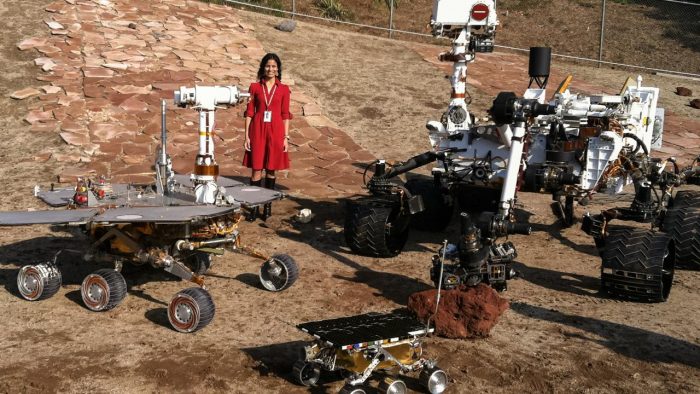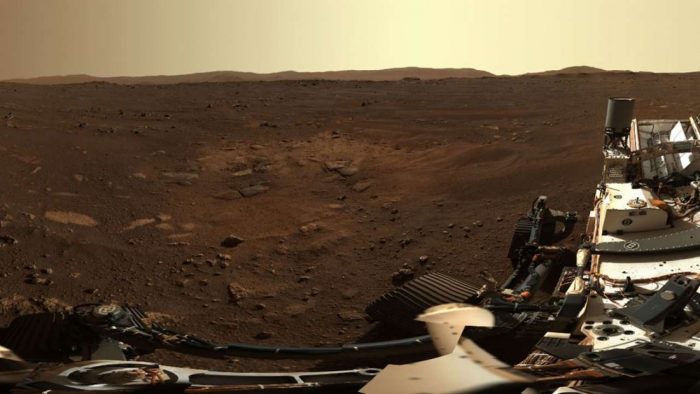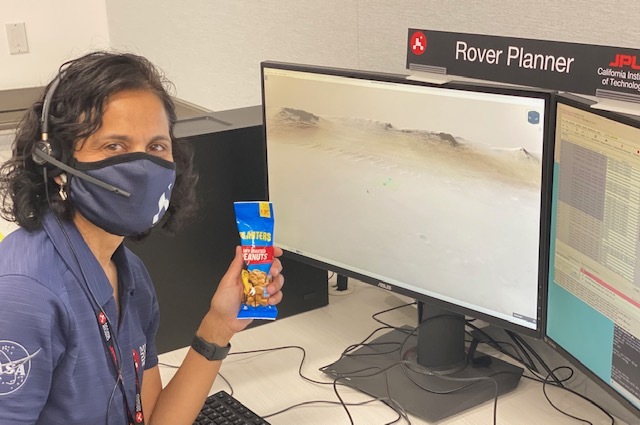A NASA engineer of Indian origin, Vandi Verma has been driving rovers on Mars since 2008. She has recently driven Perseverance rover on one of the craters of Mars and has tagged her experience as ‘Incredible.’
Before landing on Perseverance, Vandi had her hands successfully on Spirit, Opportunity, and Curiosity rovers as well.
On Friday, 2 July, VandI Verma steered the SUV-sized rover to begin its journey of searching ancient microbial life on the floor of the Jezero crater. She is steering the rover through the tenuous terrain of the crater. Describing the process of driving on one of the most interesting craters of Mars which is believed to be the site of an ancient lake, Verma said, “Jezero is incredible.”

Vandi holds a Ph.D. in Robotics from Carnegie Mellon University. She is the chief engineer for robotics operations with NASA’s Jet Propulsion Laboratory (JPL). She hails from Halwara in Punjab and has an army background. Her father was an Indian Air Force pilot.
According to various studies and findings, Jezero crater, which is Verma’s operational ground at present, was once a lake. It was around some billions of years ago when Mars had a wetter terrain than today.
About the Perseverance Rover
The destination of the Rover called Perseverance is a dried-out river delta at the Jezero crater’s edge. During its movement, the rover will gather samples over some 15 kilometers stretch and then prep them for collection for a future mission that would take them back to Earth for further analysis.
With the commencement of the journey by the rover, a team of engineers, drivers, and planners is involved in its navigation on Mars. A careful and précised route has to be made to safeguard the science laboratory on wheels from terrain-related incidents.
The rover cannot be driven using a joystick since the radio signals between Earth and Mars are vary. The engineers, therefore, have to rely on commands to be executed beforehand. They depend on satellite images of the crater and use 3D glasses to view the surface of Red Planet in the rover’s vicinity. 
Once the team is done preparing for the entire course of the rover, they put the instructions to Mars, and the rover executes those instructions the following day.
Unlike its forerunners, Perseverance has the ability to employ one of its computers just for navigation on the surface. The main computer of this rover can devote itself to the many other tasks that help it in keeping itself healthy and active.
As the rover slowly and heavily started moving on the surface of Mars over 300 million kilometers away, Verma said, “It’s a rover driver’s paradise. When you put on the 3D glasses, you see so much more undulation in the terrain. Some days I just stare at the images.”

Describing a phenomenal feature of the rover, NASA said, “The rover has a powerful auto-navigation system called AutoNav. On many occasions, it drives by itself using this system. The enhanced AutoNav makes 3D maps of the terrain ahead, identifies hazards, and plans a route around any obstacles without a major need for direction from controllers back on Earth.”
Using its Visual Odometry, the rover keeps a track of how far it has moved from one spot to another. As it moves, it captures images periodically and compares one position to the next to see if it moved the expected distance.
The rover has made scientists discover some of the biggest marvels on Mars like the Ingenuity helicopter taking the first flight. It has also made oxygen from the thin Martian atmosphere.



